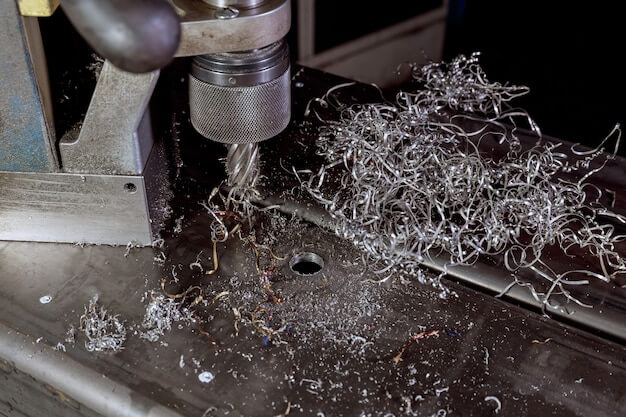Bead blasting is a crucial component within the field of Computer Numerical Control or CNC machining, known for its significant role in creating breathtakingly precise and clean finished products. This process harnesses tiny glass beads shot through high-pressure air to achieve this desired effect on various metal surfaces.
CNC machining itself provides an impeccable standard of accuracy when it comes to designing and producing complex parts used extensively in different industries from aerospace, automotive, medical, construction to marine, & more. It transforms raw materials into specified dimensions with nano-level accuracy by following coded programmed instructions without any manual intervention. Amongst the several finishing processes applied to these components, bead blasting holds specific relevance.
The Utility of Bead Blasting
This distinctive process of bead blasting renders a smooth uniform matte texture on the surface that visually enhances the aesthetics while also enhancing functional performance by eliminating surface defects. It’s suitable for many metals such as copper, bronze, aluminium, steel, stainless steel, and others giving it broad applicability across diverse industry sectors.
Bead blasting not only provides an appealing satin finish but conversely aids in sealing porosities usually found in castings which greatly helps reduce corrosion over time. Additionally, it considerably improves the bonding capabilities between surfaces making it ideal for paint adhesion.
How does Bead Blasting Work?
Imagine sanding down a piece of timber – but on a much smaller and intricate scale where precision is essential. A bead blasting machine directs fine glass beads at high speed toward the metal surface, chipping away at flaws and smoothing unevenness.
During this operation, the machine propels beads using compressed air onto the material surface. These minute spherical particles exert enough forceful impacts to alter the surface topography efficiently by removing small amounts of material each time they hit the surface. However, unlike other abrasive blasting methods, bead blasting is less aggressive and hence does not change the dimensional properties of the part, preserving the precision crafted by CNC machining.
Producing a Bead Blasted Part in CNC Machining
The journey from raw material to smooth, bead-blasted component involves several steps. Firstly, designing is done using CAD/CAM software which translates into specific machine-readable code that guides the CNC machine’s path.
Post-machining, the components are thoroughly cleaned to ensure no residue or oils remain on the surface that could potentially interfere with the blasting process. Cleaning also promotes better adhesion for the beads resulting in more effective surfacing.
Following cleaning, parts enter the blasting cabinet where they undergo treatment. Skilled technicians inspect for evenness during this process, ensuring the glass beads effectively reach every area of the piece. The intensity of the pressure used can be adjusted based on the intricacy and requirements of each component allowing an extremely customizable solution for varied applications.
Finally, after successful bead blasting, the pieces are again meticulously cleaned to remove residual particles before moving onto any additional coating operations if required (like painting or plating).
In conclusion, bead blasting as integral to CNC machining ensures improvements both visually and functionally. Though often considered primarily for its aesthetic enhancement capabilities, it is equally important to remember its significant contributions towards improved resistivity against corrosion, enhanced longevity, and overall performance of the final product.
Other Articles You Might Enjoy
- The Intricacies of Bead Blasting in CNC Machining(cnc machining china Antonio)
CNC (Computer Numerical Control) machining stands as a cornerstone in the world of manufacturing. It is an innovative technology that has revolutionized the entire spectrum of creating precise, quality and…
- Custom CNC Machining for High-End Musical Instruments
Introduction to Custom CNC Machining in High-End Musical Instruments CNC machining, or computer numerical control machining, is a manufacturing process in which programmed software directs factory tools and machinery. This…
- Tool Steel Grades in CNC Machining: D2 vs. A2 - A Comprehensive Comparison?
Introduction to Tool Steel In the field of machining, tool steel plays a vital role due to its unique properties. Essentially, tool steel is a type of carbon alloy steel…









